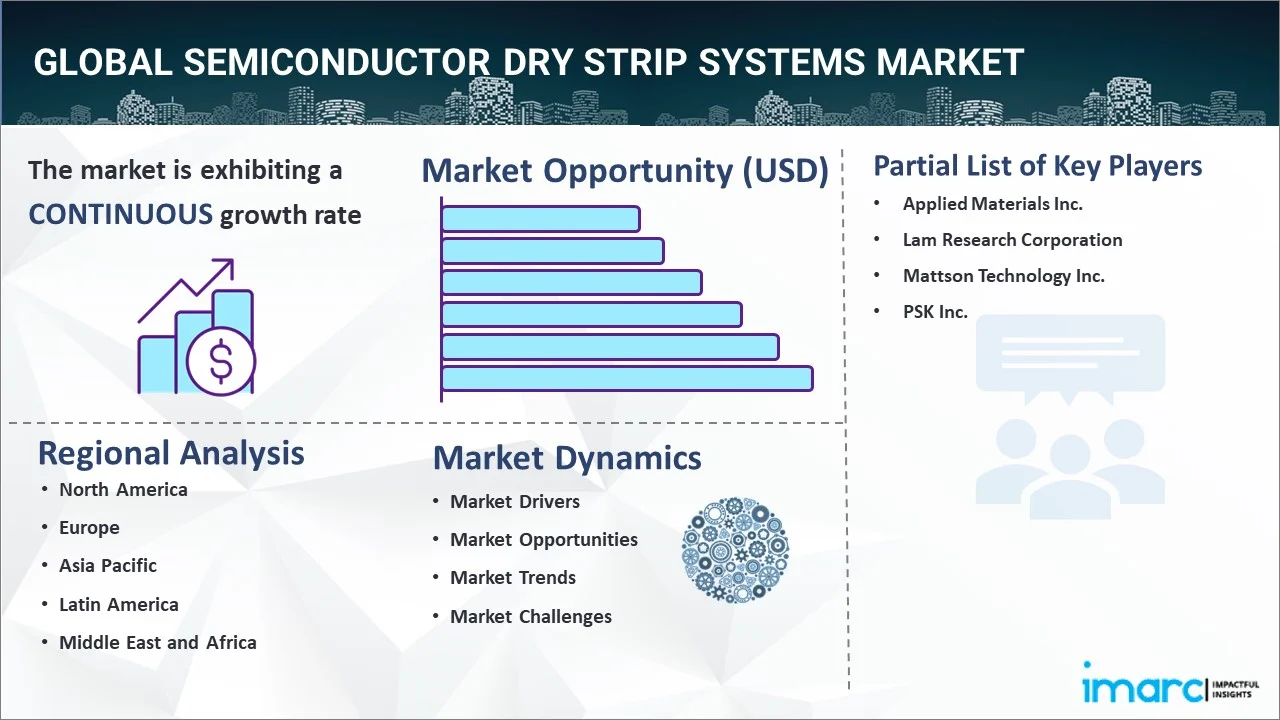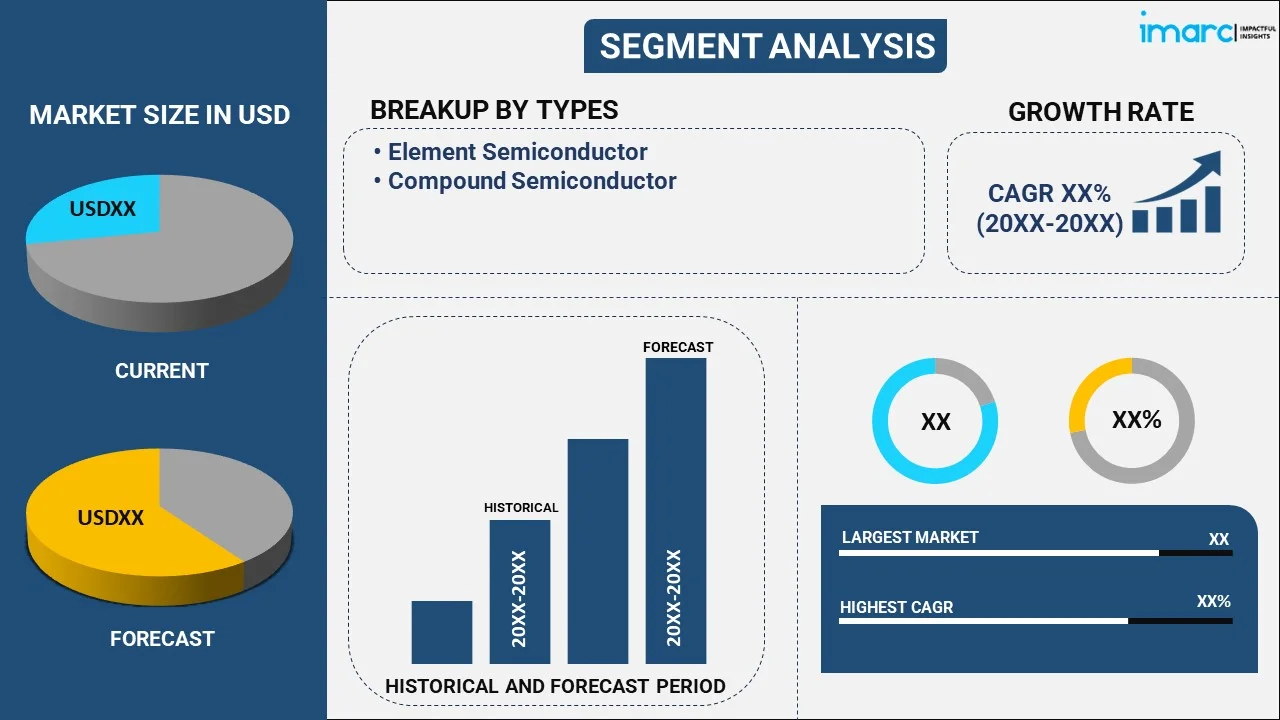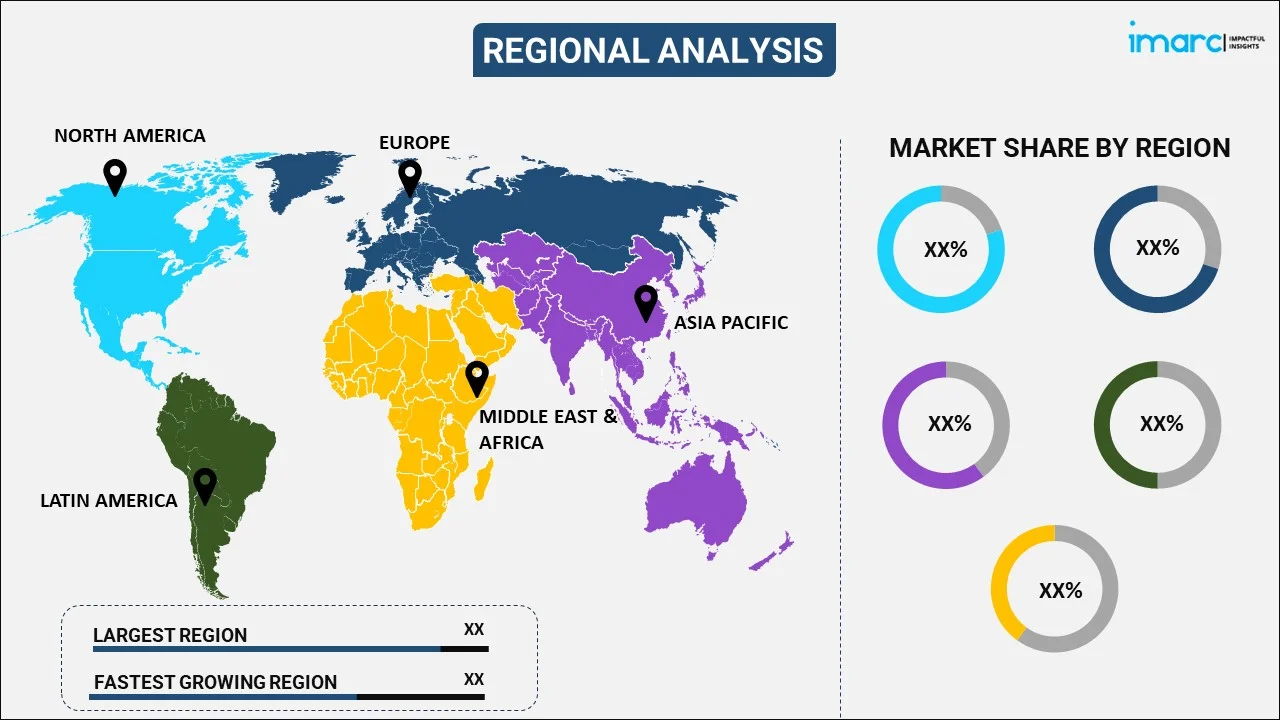
Semiconductor Dry Strip Systems Market Report by Type (Element Semiconductor, Compound Semiconductor), Application (Consumer Electronics, Automotive, Industrial, and Others), and Region 2025-2033
Market Overview:
The global semiconductor dry strip systems market size reached USD 394.4 Million in 2024. Looking forward, IMARC Group expects the market to reach USD 581.1 Million by 2033, exhibiting a growth rate (CAGR) of 4.18% during 2025-2033. The increasing demand for advanced semiconductor devices, growth in consumer electronics, the widespread adoption of technologies like 5G, AI, and IoT, the growing need for precise and efficient wafer processing, miniaturization of semiconductor components, and environmental regulations promoting dry processing methods are some of the major factors propelling the market growth.
|
Report Attribute
|
Key Statistics
|
|---|---|
|
Base Year
|
2024
|
|
Forecast Years
|
2025-2033
|
|
Historical Years
|
2019-2024
|
|
Market Size in 2024
|
USD 394.4 Million |
|
Market Forecast in 2033
|
USD 581.1 Million |
| Market Growth Rate 2025-2033 | 4.18% |
A semiconductor dry strip system is used to eliminate the masking layers from the wafer without causing any damage to surface materials. It comprises an inductively coupled plasma (ICP) source and a twin chamber design that operates independently with a dedicated vacuum transfer module for maximum process flexibility and extendibility. It is used for minimizing oxidation and silicon loss without damaging equipment while meeting the needs of advanced technology. It assists in removing hard mask materials, anti-reflective coating (ARC), organic residue, and dry film-resistant ash. It offers high plasma density, low particle performance, enhanced mean-time-between-clean, low consumable cost, and improved fluorine process capability. As it provides high surface integrity, precise wafer temperature control, and full-spectrum optical emission spectroscopy (OES) endpoint detection option, the demand for semiconductor dry strip system is rising across the globe.

Semiconductor Dry Strip Systems Market Trends:
Rising Demand for Advanced Semiconductor Devices
The semiconductor industry is witnessing an increased demand due to the growing use of advanced electronic devices in various sectors, including consumer electronics, automotive, telecommunications, and industrial applications. This drives the need for precise and efficient wafer processing technologies, such as dry strip systems, which are essential for cleaning and removing photoresist and other residues from wafers. As semiconductor devices become more complex, with smaller nodes and higher performance requirements, dry strip systems play a critical role in ensuring the reliability and performance of chips. The increasing adoption of technologies like 5G, artificial intelligence (AI), and high-performance computing accelerates this demand, making semiconductor manufacturing more reliant on advanced processing equipment.
Growth in Consumer Electronics and IoT Devices
The proliferation of consumer electronics, such as smartphones, laptops, tablets, and wearable devices, along with the rapid expansion of the Internet of Things (IoT), is a major driver for the semiconductor dry strip systems market. These devices require highly sophisticated semiconductor components, which need precise processing methods. Dry strip systems are preferred for their ability to handle delicate wafers and advanced nodes without damaging the materials. The growing demand for smaller, more energy-efficient chips with enhanced functionality increases the need for reliable semiconductor processing tools, further boosting the market for dry strip systems. As IoT and smart devices penetrate various industries, from healthcare to automotive, the demand for advanced semiconductor devices and the equipment used to manufacture them continues to rise.
Technological Advancements and Process Efficiency
As semiconductor manufacturing processes evolve, the need for advanced equipment that ensures high process efficiency and yields becomes crucial. Dry strip systems have seen significant technological advancements, enabling them to handle the challenges of miniaturization, precision, and complexity in semiconductor fabrication. Innovations such as plasma-based dry stripping and non-chemical processes enhance wafer processing without causing damage to the material, ensuring higher yields and better performance. Additionally, these systems are designed to reduce energy consumption, minimize chemical waste, and comply with stringent environmental regulations which is expected to increase the overall semiconductor dry strip systems market share. The focus on sustainability, along with the demand for high-quality semiconductor components, drives manufacturers to adopt dry strip systems that offer both economic and environmental benefits, making them a critical part of modern semiconductor fabrication.
Key Market Segmentation:
IMARC Group provides an analysis of the key trends in each segment of the global semiconductor dry strip systems market, along with forecasts at the global, regional, and country level from 2025-2033. Our report has categorized the market based on the type and application.
Type Insights:

- Element Semiconductor
- Compound Semiconductor
The report has provided a detailed breakup and analysis of the semiconductor dry strip systems market based on the type. This includes element semiconductor and compound semiconductor.
Application Insights:
- Consumer Electronics
- Automotive
- Industrial
- Others
A detailed breakup and analysis of the semiconductor dry strip systems market based on application has also been provided in the report. This includes consumer electronics, automotive, industrial, and others. According to the report, consumer electronics accounted for the largest market share.
Regional Insights:

- North America
- United States
- Canada
- Asia Pacific
- China
- Japan
- India
- South Korea
- Australia
- Indonesia
- Others
- Europe
- Germany
- France
- United Kingdom
- Italy
- Spain
- Russia
- Others
- Latin America
- Brazil
- Mexico
- Others
- Middle East and Africa
The report has also provided a comprehensive analysis of all the major regional markets that include North America (the United States and Canada); Asia Pacific (China, Japan, India, South Korea, Australia, Indonesia, and others); Europe (Germany, France, the United Kingdom, Italy, Spain, Russia, and others); Latin America (Brazil, Mexico, and others); and the Middle East and Africa. According to the report, Asia Pacific was the largest market for semiconductor dry strip systems. Some of the factors driving the Asia Pacific semiconductor dry strip systems market included the burgeoning semiconductor industry, rising sales of consumer electronics, increasing investments by governing agencies, etc.
Competitive Landscape:
The report has also provided a comprehensive analysis of the competitive landscape in the global semiconductor dry strip systems market. Detailed profiles of all major companies have also been provided. Some of the companies covered include:
- Applied Materials Inc.
- Lam Research Corporation
- Mattson Technology Inc.
- PSK Inc.
Kindly note that this only represents a partial list of companies, and the complete list has been provided in the report.
Semiconductor Dry Strip Systems Market News:
- In May 2024, Lam Research Corporation announced its plans to expand its global semiconductor fabrication equipment supply chain to include India. The company said it is assessing capabilities across various supply chain segments and is exploring India-based suppliers who can collaborate to fulfill the need for precision components, custom parts, high-purity gas delivery systems, and other assemblies that go into cutting-edge semiconductor wafer fabrication equipment.
Report Scope:
| Report Features | Details |
|---|---|
| Base Year of the Analysis | 2024 |
| Historical Period | 2019-2024 |
| Forecast Period | 2025-2033 |
| Units | Million USD |
| Types Covered | Element Semiconductor, Compound Semiconductor |
| Applications Covered | Consumer Electronics, Automotive, Industrial, Others |
| Regions Covered | Asia Pacific, Europe, North America, Latin America, Middle East and Africa |
| Countries Covered | United States, Canada, Germany, France, United Kingdom, Italy, Spain, Russia, China, Japan, India, South Korea, Australia, Indonesia, Brazil, Mexico |
| Companies Covered | Applied Materials Inc., Lam Research Corporation, Mattson Technology Inc., PSK Inc., etc. |
| Customization Scope | 10% Free Customization |
| Post-Sale Analyst Support | 10-12 Weeks |
| Delivery Format | PDF and Excel through Email (We can also provide the editable version of the report in PPT/Word format on special request) |
Key Questions Answered in This Report:
- How has the global semiconductor dry strip systems market performed so far and how will it perform in the coming years?
- What are the drivers, restraints, and opportunities in the global semiconductor dry strip systems market?
- What are the key regional markets?
- Which countries represent the most attractive semiconductor dry strip systems markets?
- What is the breakup of the market based on the type?
- Which is the most attractive type in the semiconductor dry strip systems market?
- What is the breakup of the market based on the application?
- Which is the most attractive application in the semiconductor dry strip systems market?
- What is the competitive structure of the global semiconductor dry strip systems market?
- Who are the key players/companies in the global semiconductor dry strip systems market?
Key Benefits for Stakeholders:
- IMARC’s report offers a comprehensive quantitative analysis of various market segments, historical and current market trends, market forecasts, and dynamics of the semiconductor dry strip systems market from 2019-2033.
- The research study provides the latest information on the market drivers, challenges, and opportunities in the global semiconductor dry strip systems market.
- The study maps the leading as well as the fastest growing regional markets. It further enables stakeholders to identify the key country-level markets within each region.
- Porter's five forces analysis assist stakeholders in assessing the impact of new entrants, competitive rivalry, supplier power, buyer power, and the threat of substitution. It helps stakeholders to analyze the level of competition within the semiconductor dry strip systems industry and its attractiveness.
- Competitive landscape allows stakeholders to understand their competitive environment and provides an insight into the current positions of key players in the market.
Need more help?
- Speak to our experienced analysts for insights on the current market scenarios.
- Include additional segments and countries to customize the report as per your requirement.
- Gain an unparalleled competitive advantage in your domain by understanding how to utilize the report and positively impacting your operations and revenue.
- For further assistance, please connect with our analysts.

 Inquire Before Buying
Inquire Before Buying
 Speak to an Analyst
Speak to an Analyst
 Request Brochure
Request Brochure
 Request Customization
Request Customization



.webp)




.webp)












